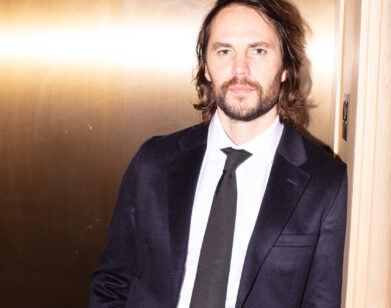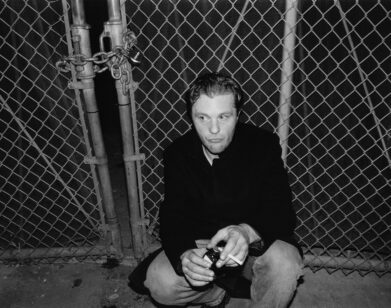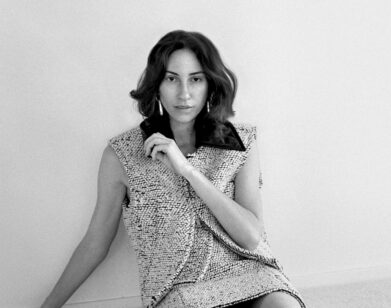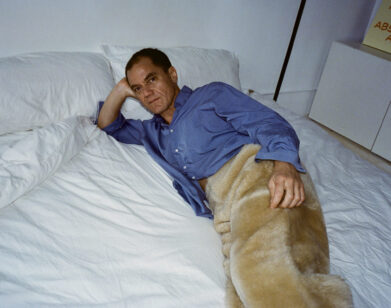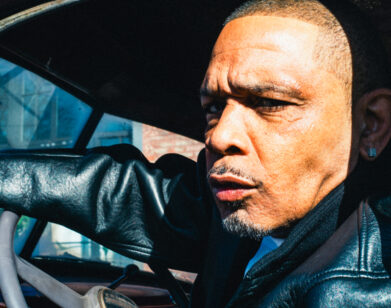Death Becomes Them
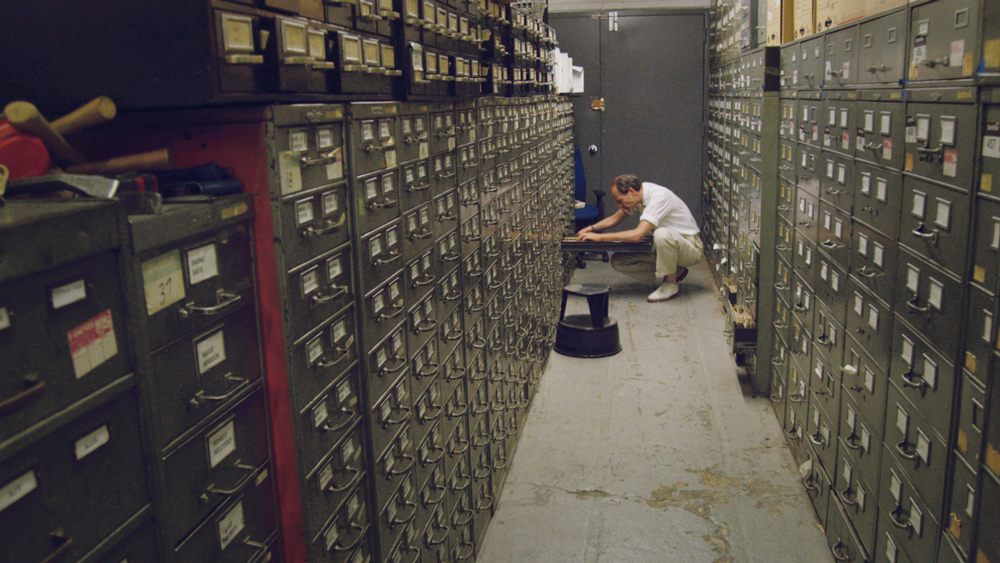
OBIT: PHOTO COURTESY OF KINO LORBER.
In 2010, the documentary filmmaker Vanessa Gould received a call from Margalit Fox, an obituaries writer at The New York Times, inquiring about the recently deceased French origami artist Eric Joisel, whom Gould profiled in her 2008 film Between the Folds. “The documentarian in me just lit up,” Gould says, “because, in a way, every obituary is like a little documentary. They’re trying to find the salient elements, boiling someone’s life down to an essence so that the larger part of it can be understood.” That call led to Gould’s second feature, Obit, out today. In this compelling character study, erring more toward dry wit than the macabre, Gould dives into the daily grind of working the “dead beat” at the Gray Lady as Fox and her colleagues distill newsworthy lives into must-read copy. “Not only do they do incredible work,” Gould says, “but they do it on fucking deadline.”
Interview recently spoke to the Brooklyn-based filmmaker by phone.
COLLEEN KELSEY: I know that you were led to this topic through your work on your previous documentary with Eric Joisel, but was the interest more about the Times or obituaries in general? What was the seed for you?
VANESSA GOULD: There were sort of two. The previous experience was the way in, but when I was being interviewed for the Times, this was a guy who I had known well, but in mid-life, so I didn’t know much about his youth or his family or that kind of stuff. When I was being asked by the reporter about him, and they were asking all of the basic facts of his life, I never got conclusive answers about some of the basic things, like, what he majored in in college. There was a rumor that he had been married, and I kind of couldn’t get my head around the fact that these were real pieces of information that disappeared with the loss of him. A week earlier I could have asked him all of them and gotten to know the truth of it. That idea of the fleetingness of human experience and, even when people have the best intentions to try to preserve somebody’s legacy, how susceptible we are to how much disappears in that puff of smoke when someone dies. The weird liminal period when everyone running around afterwards intrigued me.
Then the second thing was the fact that I was sort of bewildered that the Times was interested in him, because he’s an unknown French sculptor, basically. I was shocked that a major international newspaper was interested in the life of an unknown person. I started looking at the Times‘s editorial decisions made on the obits page. It was kind of only the Times that was doing [obituaries] at that level. I did go to an obituary writer’s conference to learn about other papers and the way other papers do obits. It’s totally valid and certainly worthy of somebody’s attention, but for this project, it felt good to have a crystal clear organizing principal around the Times and be able to go a little bit deeper in the material.
KELSEY: Something that is addressed right at the very beginning of the film is the stigma around how people view obituaries, or writing obituaries, as something that seems depressing or whatever, but it’s really more of a celebration about history and a life.
GOULD: The way I discovered the obits, the death always felt peripheral. I didn’t even have to work that hard to get myself into a framework where like, “Okay, we’re going to make this about a celebration of life,” which sort of sounds Hallmark-y, but it was a completely natural way to go. If you talk to the writers, they go across the spectrum. Some of them are a little macabre. There are some gothic elements to their personality [laughs] but others of them, like Margalit, for example, says she never thinks about the fact of death. So for me in conceiving the film, I just got instantly excited about the way in which the film could bring back to life so many fascinating people and what we could do with archival footage and still images to make people feel like they’ve gotten to see the vitality of these people.
KELSEY: How long did you spend filming in the newsroom?
GOULD: Very little time in the newsroom. I would say somewhere between four and six is probably the number of days we spent in the newsroom. I think it might be closer to four. I wanted to shoot the interviews with the writers at their houses. So, that’s what we did first, and after we did all of the long writer interviews, then I showed what we were up to. They gave us permission, which was kind of shocking, because they put a moratorium on shooting in the newsroom from outside crews. In the scheme of things, when you look at the number of hours shot for documentaries, ours is absolutely fractional compared to what’s normal now, because these people just did not have time to indulge us.
KELSEY: The whole process aspect I think is one of the driving throughlines in the film. You can see how an individual writer puts together a piece from very beginning to the end over the course of a day. Of course the looming deadline provides suspense. What were your expectations, and how did that change from what you were able to capture working side-by-side with these writers?
GOULD: The first thing I grappled with was what they do, and the amazement with the fact that they become instant experts on somebody and craft these beautiful portraits. Then the second thing was not only do they do that incredible work, but they do it on fucking deadline. So, that was the thing that I was trying to show with the process, was just that mounting element of time. When we went into to shoot that day, part of me was like, “Oh, my god it would be crazy if somebody famous died today.” Those kinds of things went through my mind. But at the end of the day, the process, no matter who they’re writing about, is kind of always the same. Bruce got this assignment of this consultant to Kennedy for the first televised debate ever, and I was Wikipedia-ing him on my phone while Bruce was doing some of his work, but for a while I was like, “Oh, is this good enough? Is this going to work?” It was such a perfect and pure expression of the process. It became clear to me that it was secondary who he was actually writing about, and the fact that it was a media thing about how the power of media influences our culture and our politics and has these sociological impacts was a really nice metaphor. So I was really pleased that we got someone who had a legacy that had layers.
KELSEY: I read that over the course of when you were filming in the newsroom, Robin Williams died, but you missed it. Did that feel like a missed opportunity, or something that was just so anomalous for the staff there?
GOULD: I don’t think about it that much anymore, but for the first several months after that happened, I really went back and forth on that. The two perspectives were that that was maybe the most noteworthy death of the year, and it would have been one of maybe the most fascinating ones to witness. The alternative argument, which is now where I feel that I am, it was so tragic, and that was exactly what I didn’t want the film to be. I wanted to put the death and feeling of tragedy and those sort of things aside. It really was to make an invigorating film that gave people a different view at something they might not have expected was possible, and so to put in a death that was not only tragic, but deeply personal, it seemed to me that it would have been grossly exploitative.
KELSEY: In one of the interviews, a writer was talking about how, in doing the research process of putting together these obituaries, you’re always looking for one thing, but you end up finding another that ends up being much more useful to you. That seemed to be a pretty apt comparison of the documentary process. Were there any things that you were dead set on and maybe didn’t find, but something else was revealed?
GOULD: There are too many events to count. One of the joys of making the film was the frequency of mirroring what they do with their subjects, and what we were doing for them. You come in as an uninformed outsider with a deep curiosity and you study the subjects and you find the little things that help you create an extremely efficiently structured piece that hopefully communicates a greater picture. In fact, one of the writers even says that in the film. So the feeling of being an outsider… I didn’t know anyone at the Times and we were there not through a cold call, but it was just a real outsider feeling in the same way that they emerge in the family rooms of the deceased families and then just furiously assess everything and break everything down. I don’t know if I can think of any specifics, because it was so much. What ended up happening was I stopped having expectations and [became] a receptacle without any blinders on. We just collected as much as we could, but all of our epiphanies really happened in the edit room.
KELSEY: What was your strategy for interviewing the writers?
GOULD: I asked for each of them to sit for a three to four hour interview, which did not make them very happy to be honest, given how little free time they have on nights and weekends, but it gave me a good chunk of time. I did copious amounts of research. I pretty much read every obituary that they had ever written for the Times, just to avoid the possibility of them mentioning something that I hadn’t read. Here’s an example: I went into every interview with the writers with a couple favorites of mine, but quickly realized that my favorites had absolutely no significance at all. What was much more interesting and important was the things that they remembered, especially because they don’t tend to remember a lot because they write so much. They would be like, “Oh, I remember this obituary I wrote about this guy who was a hobo king and he kept winning all of these hobo contests,” and so I was really looking to see what they could recall. I felt like there was some magic introduced in that, you know? But also, part of my thesis was, “What is the world through the eyes of an obituary writer? How do they see the world differently?” Because ultimately a documentary is most effective when you can see something through somebody else’s eyes and I was like, “God, somebody is writing about such clear arcs of time and the passage of time, looking at everything from World War ll to Korea to Vietnam and thinking about mid-century culture.” I really wanted to go for their personal observations on the work and the people and the process and how doing this for a living might impact them somehow.
KELSEY: Do you think that you are, as a documentarian, really attracted to people who are just so proficient at their craft?
GOULD: I think I’m more attracted to process. The proficiency guides who you choose. You wouldn’t choose to profile somebody who wasn’t proficient, but I think the thing for me that connects to the two films [I’ve done] is the metaphors and the ideas and the philosophical aspects. There’s a lot of metaphor in the origami movie, both in terms of how we shape our lives and the links between art and science. Then this film, the philosophical content of the views of these people and the clashing of an 80-year-old life and then an eight hour deadline, just all of the questions that invites and the cognitive dissonance. So, I think I’m drawn to the philosophical and also just the beautiful. All of the documentaries I go to see are about social issues, but somehow the ones that I feel compelled to make are usually about people committing themselves to doing beautiful things.
OBIT IS OUT TODAY, APRIL 26, 2017, IN LIMITED RELEASE.


